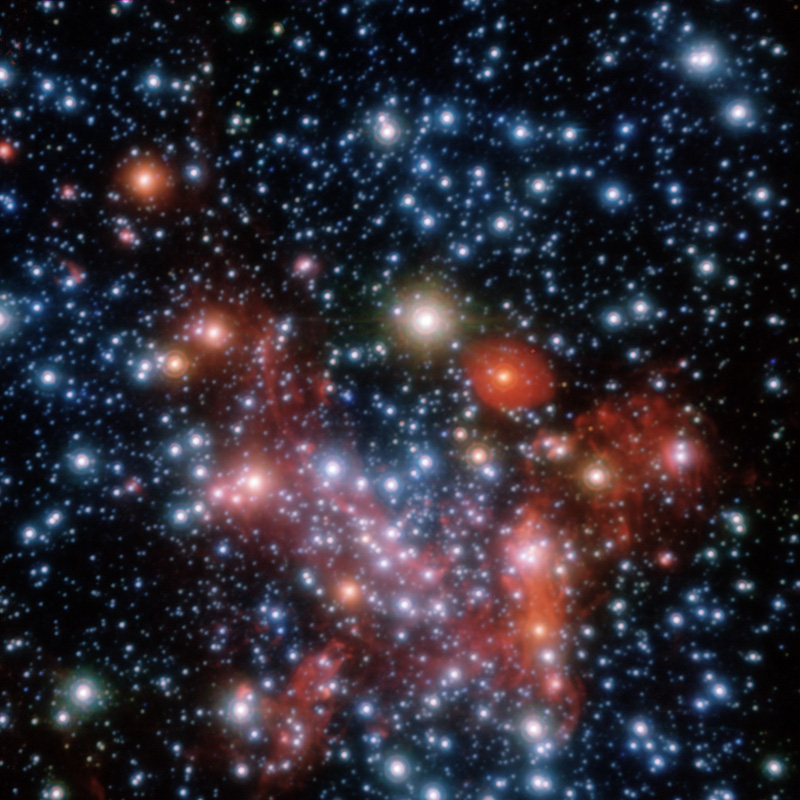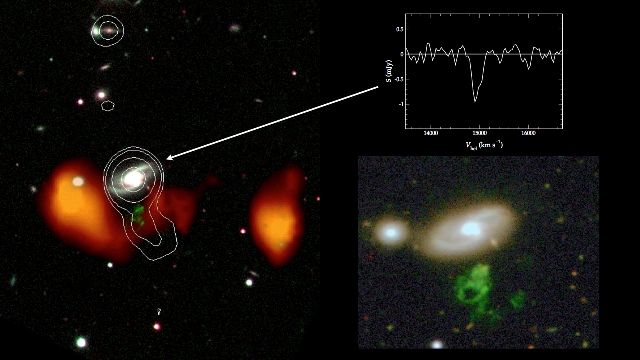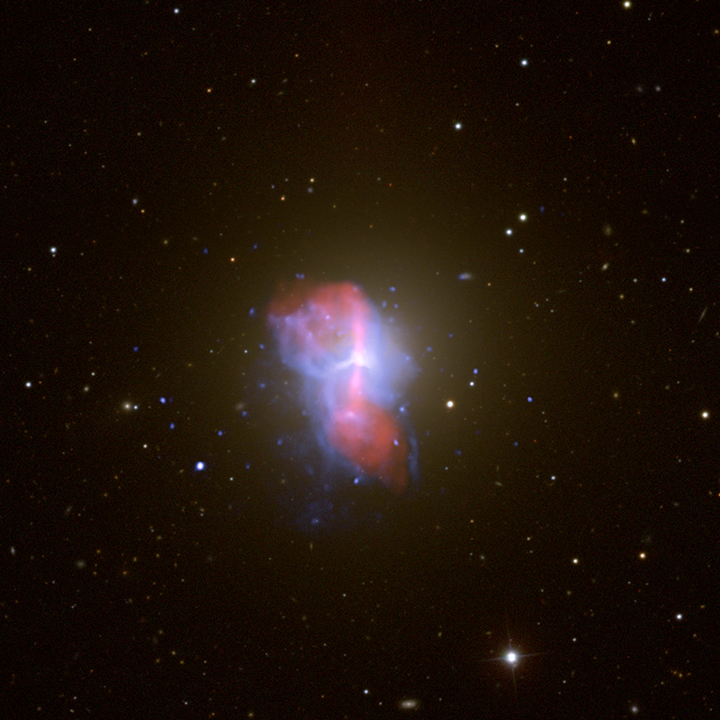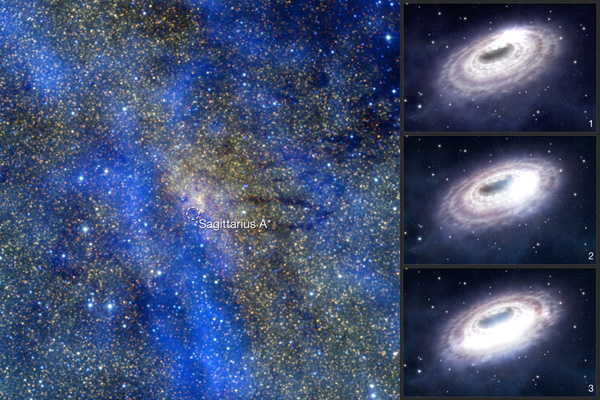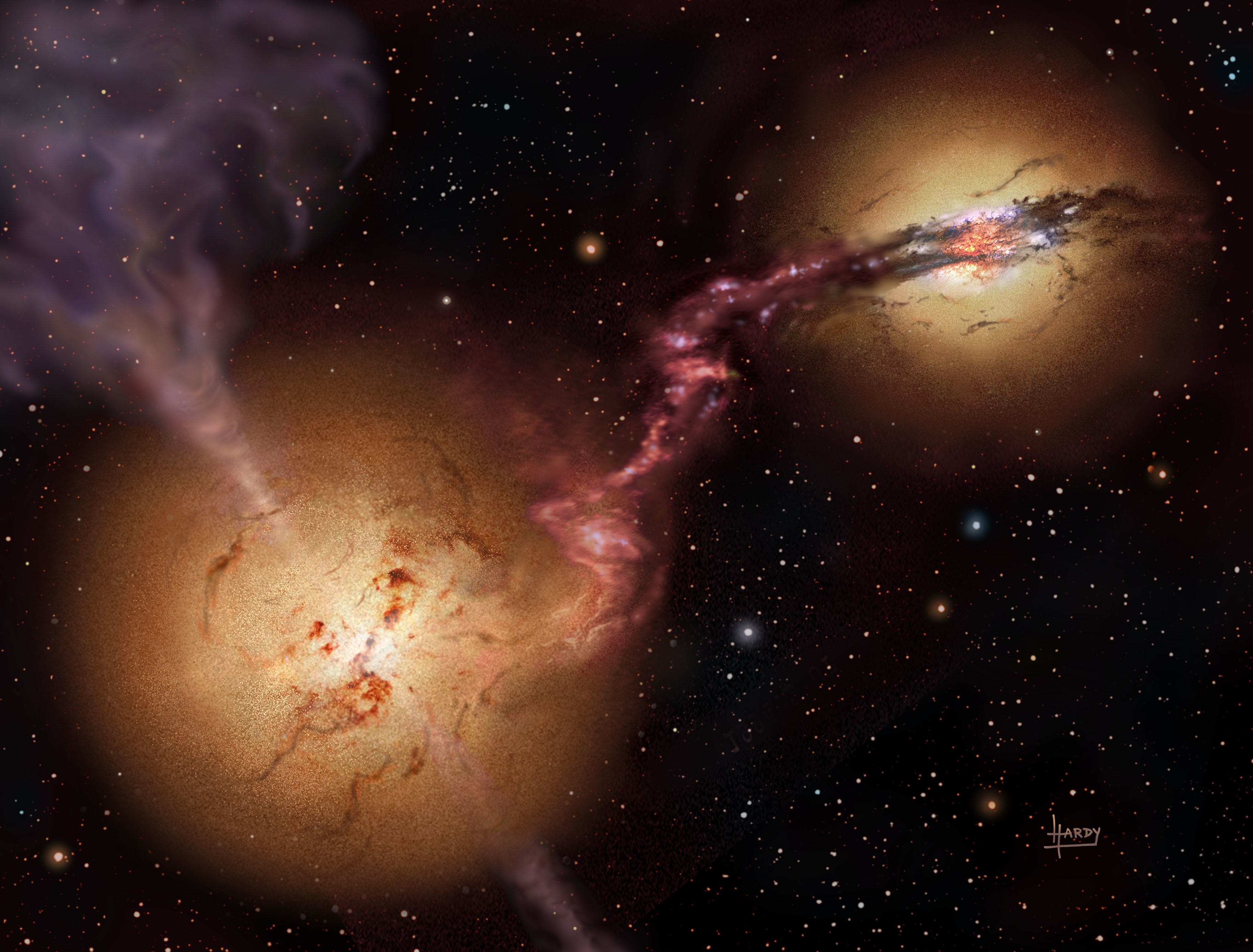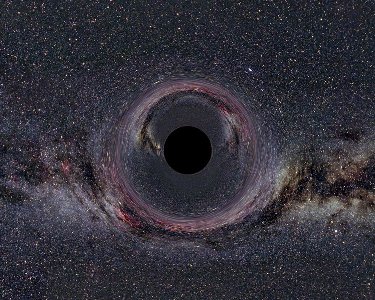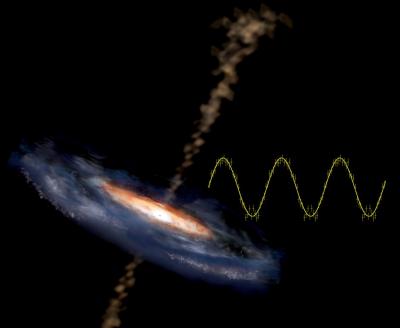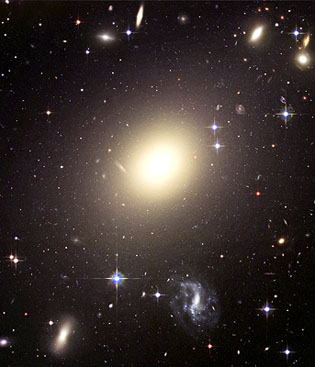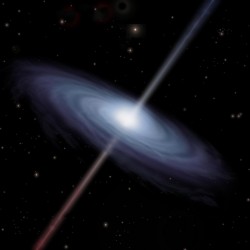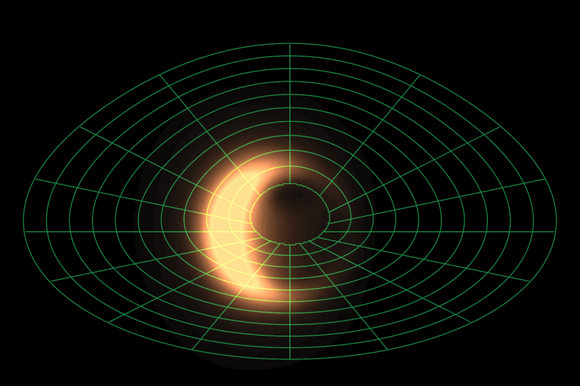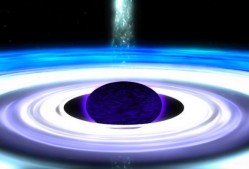[/caption]
One the one hand, this might not be surprising news, but on the other, the implications are startling. A supermassive black hole (called Sagittarius A*) lives at the centre of the Milky Way. This is the conclusion of a 16 year observation campaign of a region right in the centre of our galaxy where 28 stars have been tracked, orbiting a common, invisible point.
Usually these stars would be obscured by the gas and dust in that region, but the European Southern Observatory (ESO) in Chile has used its infrared telescopes to peer deep into the black hole’s lair. Judging by the orbital trajectories of these 28 stars, astronomers have not only been able to pinpoint the black hole’s location, they have also deduced its mass…
It has been long recognised that supermassive black holes probably occupy the centres of most galaxies, from dwarf galaxies to thin galactic disks to large spiral galaxies; the majority of galaxies appear to have them. But actually seeing a black hole is no easy task; astronomers depend on observing the effect a supermassive black hole has on the surrounding gas, dust and stars rather than seeing the object itself (after all, by definition, a black hole is black).
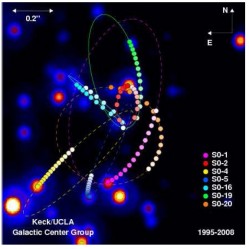 In 1992, astronomers using the ESO’s 3.5-metre New Technology Telescope in Chile turned their attentions on our very own galactic core to begin an unprecedented observation campaign. Since 2002, the 8.2-metre Very Large Telescope (VLT) was also put to use. 16 years later, with over 50 nights of total observation time, the results are in.
In 1992, astronomers using the ESO’s 3.5-metre New Technology Telescope in Chile turned their attentions on our very own galactic core to begin an unprecedented observation campaign. Since 2002, the 8.2-metre Very Large Telescope (VLT) was also put to use. 16 years later, with over 50 nights of total observation time, the results are in.
By tracking individual stars orbiting a common point, ESO researchers have derived the best empirical evidence yet for the existence of a 4 million solar mass black hole. All the stars are moving rapidly, one star even completed a full orbit within those 16 years, allowing astronomers to indirectly study the mysterious beast driving our galaxy.
“The centre of the Galaxy is a unique laboratory where we can study the fundamental processes of strong gravity, stellar dynamics and star formation that are of great relevance to all other galactic nuclei, with a level of detail that will never be possible beyond our Galaxy,” explains Reinhard Genzel, team leader of this research at the Max-Planck-Institute for Extraterrestrial Physics in Garching near Munich, Germany.
“Undoubtedly the most spectacular aspect of our 16-year study, is that it has delivered what is now considered to be the best empirical evidence that super-massive black holes do really exist,” Genzel continues. “The stellar orbits in the galactic centre show that the central mass concentration of four million solar masses must be a black hole, beyond any reasonable doubt.”
Apart from being the most detailed study of Sagittarius A*’s neighbourhood (the techniques used in this study are six-times more precise than any study before it), the ESO astronomers also deduced the most precise measurement of the distance from the galactic centre to the Solar System; our supermassive black hole lies a safe 27,000 light years away.
A lot of information was gleaned about the individual stars too. “The stars in the innermost region are in random orbits, like a swarm of bees,” says Stefan Gillessen, first author of the paper published in The Astrophysical Journal. “However, further out, six of the 28 stars orbit the black hole in a disc. In this respect the new study has also confirmed explicitly earlier work in which the disc had been found, but only in a statistical sense. Ordered motion outside the central light-month, randomly oriented orbits inside – that’s how the dynamics of the young stars in the Galactic Centre are best described.”
Quite simply, the object influencing these stars must be a supermassive black hole, there is no other explanation out there. Does this mean black holes have an even firmer standing as a cosmological “fact” rather than “theory”? It would appear so…

